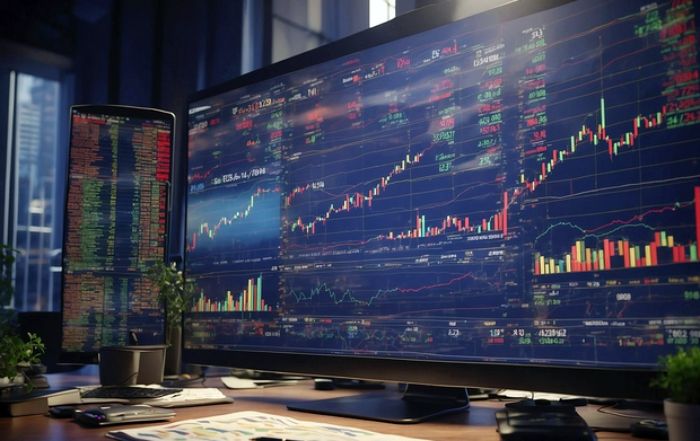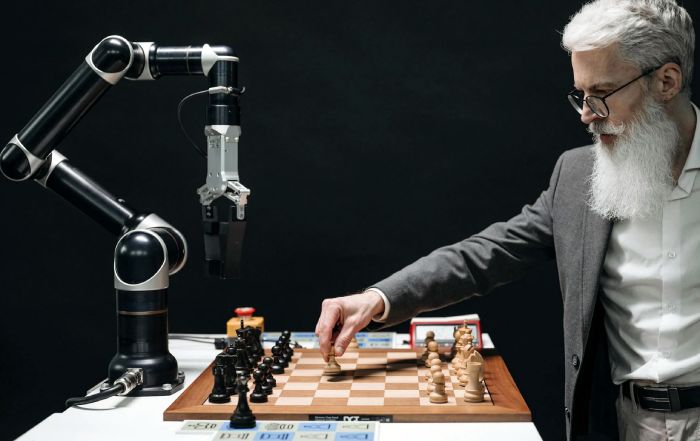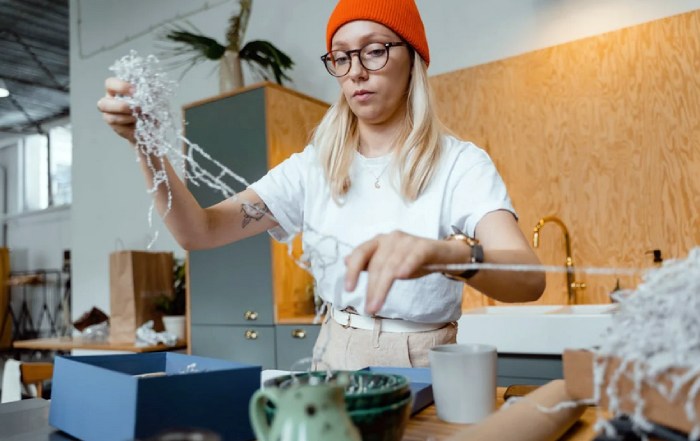Day trading has evolved from being a fringe activity conducted by a small group of highly skilled market enthusiasts into a globally recognized, technology-driven profession. This transformation has been shaped by faster trading platforms, artificial intelligence-powered analytics, and broader access to financial markets. Yet, while the tools have become more sophisticated, the competitive nature of intraday trading has intensified. For traders to thrive in this crowded environment, specialization has emerged as one of the most critical factors for sustained success.
Specialization in day trading refers to mastering a specific niche—whether it is a particular asset class, sector, market pattern, or trading style—until it becomes second nature. The trader’s “edge” is no longer defined merely by access to information but by how deeply they understand their chosen niche and how effectively they can exploit it under varying market conditions. For professionals who want to transform day trading from an unpredictable gamble into a reliable business model, the path forward increasingly lies in focusing on depth over breadth.
The audience of TradeProfession.com—professionals, executives, and entrepreneurs who value strategic thinking—understands that building mastery in any field is about more than knowledge acquisition; it is about turning expertise into consistent performance. Day trading is no different, and the lessons drawn from other high-performance industries apply here as well.
Why Specialization Matters More Than Ever
Historically, traders sought to diversify their skills, jumping between stocks, forex, commodities, and cryptocurrencies to capture opportunities wherever they emerged. In the current market environment, however, the speed and complexity of financial instruments have outpaced the ability of generalists to maintain a consistent edge. A specialized trader, on the other hand, can spot subtle market cues and react with precision, leveraging intimate knowledge of market microstructures, sector-specific news, and asset-specific volatility patterns.
Platforms like TradeProfession.com/investment emphasize that modern markets reward those who think like domain experts. This mirrors how surgeons, legal specialists, and elite athletes hone their focus to outperform peers. In the trading arena, this translates to:
Recognizing nuances in price action that algorithms overlook.
Understanding how macroeconomic and sector-specific news impact a narrowly defined market segment.
Identifying unique entry and exit points based on years of data-specific analysis.
By concentrating on a single area, traders can also develop proprietary strategies that are harder for others to replicate, which becomes a formidable competitive moat.
Trading Specialization Decision Tree
Find your optimal trading niche through guided questions
What's your primary trading motivation?
Choosing a Specialization: Aligning Strengths and Market Opportunities
The first step in becoming a specialized day trader is selecting a focus area that aligns with personal strengths, market demand, and risk tolerance. The most successful traders combine passion, skill, and profitability potential in their choice of niche.
Some common paths include:
Asset-Class Specialization – Mastering equities, forex pairs, commodities like gold or crude oil, or cryptocurrencies such as Bitcoin and Ethereum.
Sector-Based Specialization – Focusing on specific industries such as technology, renewable energy, healthcare, or financials.
Market Condition Specialization – Excelling in trading volatile markets, earnings season volatility, or trend-following in stable environments.
Pattern Recognition Specialization – Concentrating on scalping strategies, breakout patterns, or mean-reversion setups.
For example, a trader specializing in US tech stocks might study historical earnings reactions, sentiment shifts tied to product launches, and how regulatory developments influence price momentum. Meanwhile, a trader focusing on forex market liquidity may master the nuances of how central bank announcements shift currency pairs.
A key recommendation from the TradeProfession.com/education resource hub is to choose a niche where you can sustain long-term interest, as mastery requires both analytical rigor and consistent engagement.
Building Mastery Through Research and Immersion
Once a specialization is chosen, the path to mastery involves structured research, real-time observation, and disciplined practice. This process mirrors the journey of a professional investor, except the timeframes and decision-making speed are compressed for day trading.
Effective mastery-building includes:
Deep-Dive Market Studies – Reviewing years of historical data to identify patterns unique to the chosen niche. For example, studying how a specific stock reacts to quarterly earnings over the past decade.
Macro and Micro Context Analysis – Understanding how geopolitical events, central bank policies, and industry-specific developments influence short-term movements.
Simulation and Paper Trading – Using platforms like Investopedia Simulator to test strategies in risk-free environments before committing capital.
Mentorship and Networking – Engaging with professional communities such as the TradeProfession.com/global network to exchange insights with traders who share the same specialization.
Technology accelerates this process. AI-powered tools such as TradingView and algorithmic backtesting platforms allow traders to analyze scenarios faster than ever before, but the true value comes from the trader’s ability to interpret these insights through the lens of their specialization.
Risk Management as the Foundation of Sustainable Specialization
No matter how skilled a specialized trader becomes, success depends on disciplined risk management. Overconfidence can be the downfall of even the most experienced professionals. Specialization can sometimes create an illusion of control, leading to excessive position sizes or neglect of stop-loss protections.
To counteract this, traders should follow established capital preservation principles:
Risk no more than 1–2% of total trading capital on a single trade.
Use pre-defined stop-loss orders to guard against sudden reversals.
Maintain a trading journal to track performance trends and emotional decision-making patterns.
Diversify within the specialization—e.g., trading multiple stocks within the same sector to avoid single-position dependency.
The TradeProfession.com/stockexchange section frequently highlights case studies where robust risk controls allowed traders to survive prolonged drawdowns and emerge stronger.
The Role of Technology in Amplifying a Trader’s Edge
In 2025, the convergence of artificial intelligence, high-frequency trading infrastructure, and real-time analytics has significantly reshaped the role of the day trader. Specialization is now supported by a vast array of digital tools that can process vast amounts of data in milliseconds.
For example, traders can:
Deploy AI-powered sentiment analysis to gauge market mood from news and social media feeds.
Use algorithmic triggers to automate entries and exits for pattern-specific trades.
Leverage deep learning models for predictive analytics in niche markets.
These innovations, explored in the TradeProfession.com/artificialintelligence knowledge base, mean that specialized traders can act with greater precision, reduce reaction times, and monitor multiple market conditions simultaneously—without diluting their focus.
Psychological Resilience in a Specialized Trading Career
Specialization in day trading offers an undeniable edge, but it also brings unique psychological challenges. By narrowing focus, a trader often works with a smaller pool of opportunities, which means patience becomes a critical skill. The temptation to “force trades” on days when setups are scarce can lead to unnecessary losses. This reality underscores the importance of psychological resilience, the mental discipline to wait for the right conditions rather than chasing the market.
Specialized traders face additional pressure because their performance metrics are often closely tied to a specific niche. A biotech-focused trader, for instance, may experience dry spells when the sector is quiet. Maintaining confidence during such periods requires not only trust in the system but also an ability to zoom out and see performance over a longer horizon. Mental frameworks such as probabilistic thinking, where each trade is evaluated as one event in a large statistical sample, help professionals detach from the emotional swings of individual outcomes.
The TradeProfession.com/personal section often highlights how traders can borrow mental strategies from elite sports psychology—such as visualization, stress inoculation, and recovery routines—to maintain peak performance across different market cycles. In day trading, mental stamina can be just as important as technical skill.
Continuous Learning and Adaptive Expertise
Even when specializing, markets are not static. Economic cycles, regulatory changes, and technological innovations can alter the playing field within months. For a specialized trader, complacency is dangerous. Continuous learning is essential to maintain relevance and effectiveness.
A trader focusing on energy commodities, for example, must track not only price charts but also geopolitical developments, OPEC decisions, and advances in renewable energy that may shift market sentiment. Similarly, a crypto day trader needs to stay ahead of blockchain protocol updates, DeFi innovations, and regulatory policy changes in major jurisdictions.
Adaptation often involves expanding skill sets without abandoning the core specialization. This may mean learning to incorporate options trading for risk hedging, mastering algorithmic tools for faster execution, or integrating macroeconomic models into a sector-focused strategy.
Resources like TradeProfession.com/technology and TradeProfession.com/innovation provide a constant stream of updates on how innovation is reshaping financial markets, enabling traders to evolve with their niche rather than being displaced by it.
Networking and Collaborative Intelligence
In the hyperconnected trading ecosystem of 2025, specialization doesn’t mean isolation. Collaborative intelligence—sharing insights, data, and strategies with a network of like-minded professionals—has become a force multiplier for performance.
Specialized traders often participate in private Discord groups, Slack channels, and institutional-level research forums, where members exchange high-probability setups, discuss recent trade outcomes, and alert one another to market-moving news in their sector. The advantage here is collective vigilance: while one trader monitors a specific stock’s order flow, another might track macroeconomic indicators that affect the sector’s liquidity.
The TradeProfession.com/executive and TradeProfession.com/founders sections regularly showcase how leaders in trading firms cultivate niche-focused teams, blending individual mastery with group intelligence to create a consistent competitive edge. By tapping into a strong network, traders not only expand their knowledge base but also strengthen accountability and emotional discipline.
Case Studies: Mastery in Action
The Volatility Architect
A London-based trader built a career specializing in earnings season volatility for U.S. tech stocks. By meticulously studying 15 years of quarterly earnings data from companies like Apple, Microsoft, and Nvidia, this trader could predict market sentiment patterns with high accuracy. Leveraging pre-market option pricing, they structured trades that captured outsized returns within minutes of earnings releases. Over a five-year span, the strategy produced double-digit annual returns while maintaining controlled drawdowns.
The Forex Liquidity Strategist
In Singapore, another trader developed expertise in trading Asian session forex liquidity surges, focusing on USD/JPY and AUD/USD pairs. Through years of studying central bank interventions, liquidity gaps, and overlapping session effects, they created an algorithmic model that executed high-probability scalps within narrow time windows. This focus allowed them to consistently outperform generalist forex traders, particularly in periods of macroeconomic uncertainty.
The Commodity Pattern Hunter
A Canadian trader specializing in energy futures developed an edge by combining technical analysis with real-time tracking of shipping data and weather patterns. When winter storms disrupted supply chains in North America, this trader anticipated price spikes in natural gas futures before the market fully reacted, allowing them to capture rapid gains.
These examples align with insights from the TradeProfession.com/business and TradeProfession.com/economy pages, which stress that specialization works best when built on verifiable data, repeatable processes, and a deep understanding of external factors affecting the niche.
The Future of Specialization in Day Trading
Looking ahead, the role of specialization in day trading is poised to grow even stronger. Three major forces will shape this evolution:
AI-Enhanced Market Scanning – Artificial intelligence will continue to automate broad market surveillance, making it less advantageous for humans to act as generalists. Specialists who can interpret AI-generated signals in the context of their niche will gain the upper hand.
Fragmentation of Financial Instruments – With the rise of tokenized assets, micro-futures, and sector-specific ETFs, traders will have more opportunities to focus on ultra-narrow segments of the market.
Regulatory Complexity – As jurisdictions impose different rules on various asset classes, traders who master the regulatory landscape of their niche will navigate compliance with greater ease and profitability.
The TradeProfession.com/global and TradeProfession.com/crypto resources illustrate how globalized markets create new specializations that did not exist even five years ago. From carbon credit futures to AI-indexed funds, the possibilities for building a unique edge are expanding.
From Skill to Sustainable Business Model
Day trading through specialization transforms what is often perceived as speculative gambling into a structured, professional endeavor. By focusing on a single niche, traders develop pattern recognition, speed of execution, and strategic foresight that generalists struggle to match. The combination of psychological discipline, continuous learning, and technology integration allows specialists to turn their edge into a repeatable revenue stream.
For professionals seeking to elevate their trading from a side activity to a serious business, the lesson is clear: depth beats breadth. The most successful traders of 2025 will be those who can identify a market segment they understand better than anyone else, refine their expertise through deliberate practice, and adapt their strategies as markets evolve.
The journey is not without its challenges, but for those willing to commit, specialization offers the rarest commodity in the trading world—a consistent and defensible edge. To explore more about building professional mastery in trading and beyond, readers can visit TradeProfession.com and dive into its curated insights across investment, technology, and innovation domains.
Day Trading Through Specialization: How Mastery Becomes Your Edge
Introduction: The Evolving Landscape of Day Trading
In 2025, day trading has transitioned from being a niche pursuit for a handful of enthusiasts into a global, technology-augmented profession. This shift has been driven by the democratization of trading platforms, the integration of AI-powered analytics, and the increased availability of real-time market data. However, with broader access comes intensified competition, and success now demands a sharper, more defensible edge. That edge is often found in specialization—the practice of mastering a narrowly defined niche until it becomes second nature.
Specialization allows traders to refine their skills to a point where subtle cues invisible to generalists become actionable signals. Just as a surgeon hones expertise in one type of procedure or a legal professional focuses on a specific branch of law, the specialized trader develops a mastery that delivers consistent performance even in volatile markets. For readers of TradeProfession.com, where strategic thinking and industry foresight are core values, the idea of depth over breadth is already familiar and resonates deeply in a trading context.
Why Specialization Matters More Than Ever
In the early 2000s, a generalist approach could yield respectable results because market inefficiencies were more common. Today, algorithmic trading systems and institutional-grade analytics dominate the landscape, leaving little room for unstructured, opportunistic strategies. According to Investopedia, over 70% of U.S. equity trades now occur through automated systems, meaning that traders must find unique edges that machines cannot easily replicate.
Specialized traders develop:
Nuanced pattern recognition that algorithms miss.
A sector-specific news radar capable of interpreting how an event will ripple through prices.
Proprietary strategies tuned to the unique volatility, liquidity, and behavioral patterns of their chosen asset or market condition.
Platforms like TradeProfession.com/investment stress that this focus mirrors elite performance fields, where the deepest expertise produces the greatest competitive advantage.
Choosing a Specialization: Aligning Strengths and Market Opportunities
The first challenge is selecting a specialization that fits both personal skill sets and market demand. Common pathways include:
Asset-Class Specialization – Mastery of equities, forex pairs, commodities, or cryptocurrencies. For example, a trader could focus exclusively on gold futures to exploit recurring seasonal patterns.
Sector-Based Specialization – Concentrating on industries like technology, renewable energy, or healthcare, each with its own market rhythms and catalysts.
Market Condition Specialization – Excelling in environments such as high volatility or low liquidity.
Pattern Recognition Specialization – Focusing on breakouts, mean reversion, or momentum setups.
A trader specializing in U.S. tech earnings plays might build a database of historical earnings reports, price reactions, and analyst forecast trends from sources like CNBC and Yahoo Finance to time trades with precision. The TradeProfession.com/education section often highlights that true mastery requires choosing a niche you can commit to for years, as consistency and accumulated insight are key drivers of long-term success.
Building Mastery Through Research and Immersion
Once the niche is chosen, mastery is built through structured research, continuous observation, and disciplined application. This includes:
Historical Data Analysis – Mining 5–15 years of price action from sources like TradingView to identify patterns.
Macro and Micro Context Awareness – Understanding how events reported by Reuters or Financial Times affect the target market.
Simulation and Paper Trading – Using tools such as the Investopedia Stock Simulator to refine strategies before risking capital.
Networking and Mentorship – Engaging with peer groups via TradeProfession.com/global to share niche-specific intelligence.
Specialists benefit from leveraging AI-driven sentiment analysis, like those covered in Bloomberg Technology, which can process vast amounts of market chatter in seconds, providing a tactical edge.
Risk Management as the Foundation of Sustainable Specialization
Even the most skilled specialist will fail without robust risk controls. Specialization can create overconfidence, leading to outsized positions and unnecessary losses. Best practices include:
Limiting any single trade risk to 1–2% of total capital.
Using pre-set stop-loss levels informed by historical volatility.
Diversifying within the specialization (e.g., multiple correlated assets rather than a single instrument).
Maintaining a trading journal to spot patterns in both success and failure.
Case studies in TradeProfession.com/stockexchange reveal that the traders who survive downturns are those with disciplined capital preservation strategies. As Morningstar research shows, risk-adjusted returns are the truest measure of sustainable trading success.
The Role of Technology in Amplifying a Trader’s Edge
The technology landscape for day traders in 2025 is dominated by AI-enhanced market scanning, algorithmic execution, and predictive analytics. Tools like MetaTrader 5 or NinjaTrader allow for rapid strategy testing and automated trade placement within milliseconds.
For specialists, technology enables:
Faster Execution – Reducing slippage in high-volatility environments.
Better Data Processing – Identifying patterns across millions of data points.
24/7 Monitoring – Particularly vital for crypto specialists operating in non-stop markets.
Insights in TradeProfession.com/artificialintelligence explain how machine learning models, when customized to a niche, can outperform generic market-wide models by focusing only on relevant variables.
Psychological Resilience in a Specialized Trading Career
Specialists must master not only their market but also their own psychology. Patience is a virtue when opportunities are fewer but higher quality. Resources like Psychology Today highlight the benefits of mindfulness and cognitive reframing in high-pressure environments.
A biotech-focused trader, for example, may face weeks of inactivity between catalyst events. Maintaining confidence during such periods involves reviewing long-term performance data and reinforcing a probabilistic mindset. The TradeProfession.com/personal hub frequently outlines techniques for emotional regulation in professional trading.
Continuous Learning and Adaptive Expertise
Market environments evolve. As World Economic Forum reports, geopolitical events, technological innovation, and regulatory shifts can alter market structures in months. Specialists must adapt without losing their core identity.
This might mean:
Incorporating options hedging into a stock-based strategy.
Integrating blockchain analytics for crypto-focused traders.
Adjusting to new compliance regimes in cross-border trading.
TradeProfession.com/technology and TradeProfession.com/innovation both emphasize staying ahead of these changes through deliberate skill expansion.
Networking and Collaborative Intelligence
In 2025, specialization thrives in collaboration. Private trading groups, Discord communities, and niche-focused mastermind circles serve as real-time intelligence hubs. A trader might monitor micro-level order flow while a peer tracks macro-level currency movements that affect the sector.
Examples in TradeProfession.com/executive and TradeProfession.com/founders show how structured collaboration can transform isolated specialists into part of a high-performance team with amplified market coverage.
Case Studies of Mastery
The Volatility Architect – Leveraged 15 years of U.S. tech earnings data from Nasdaq and pre-market option pricing to consistently profit on earnings announcements.
The Forex Liquidity Strategist – Used central bank data from Bank of Japan and liquidity flow analytics to dominate Asian session scalping.
The Commodity Pattern Hunter – Combined technical setups with weather models from NOAA to anticipate natural gas price spikes.
The Future of Specialization in Day Trading
The next decade will be shaped by:
AI-Market Integration – Specialists will increasingly act as interpreters of machine-generated insights.
Fragmentation of Instruments – Growth of tokenized and micro assets will offer narrower niches.
Regulatory Complexity – Mastery of compliance in specific sectors will become a profitability driver.
TradeProfession.com/global and TradeProfession.com/crypto detail how new products and regulations are creating fresh specialization opportunities.
Conclusion: Depth Beats Breadth
Specialization transforms day trading from speculative gambling into a disciplined, professional practice. Traders who commit to mastering one niche gain unique insights, faster execution, and an enduring competitive edge. By combining psychological resilience, continuous learning, networking, and technology, specialization can turn skill into a sustainable business model.
Readers ready to refine their trading focus can explore advanced strategies, technology integration, and niche opportunities across TradeProfession.com, particularly in its investment, technology, and innovation sections.










